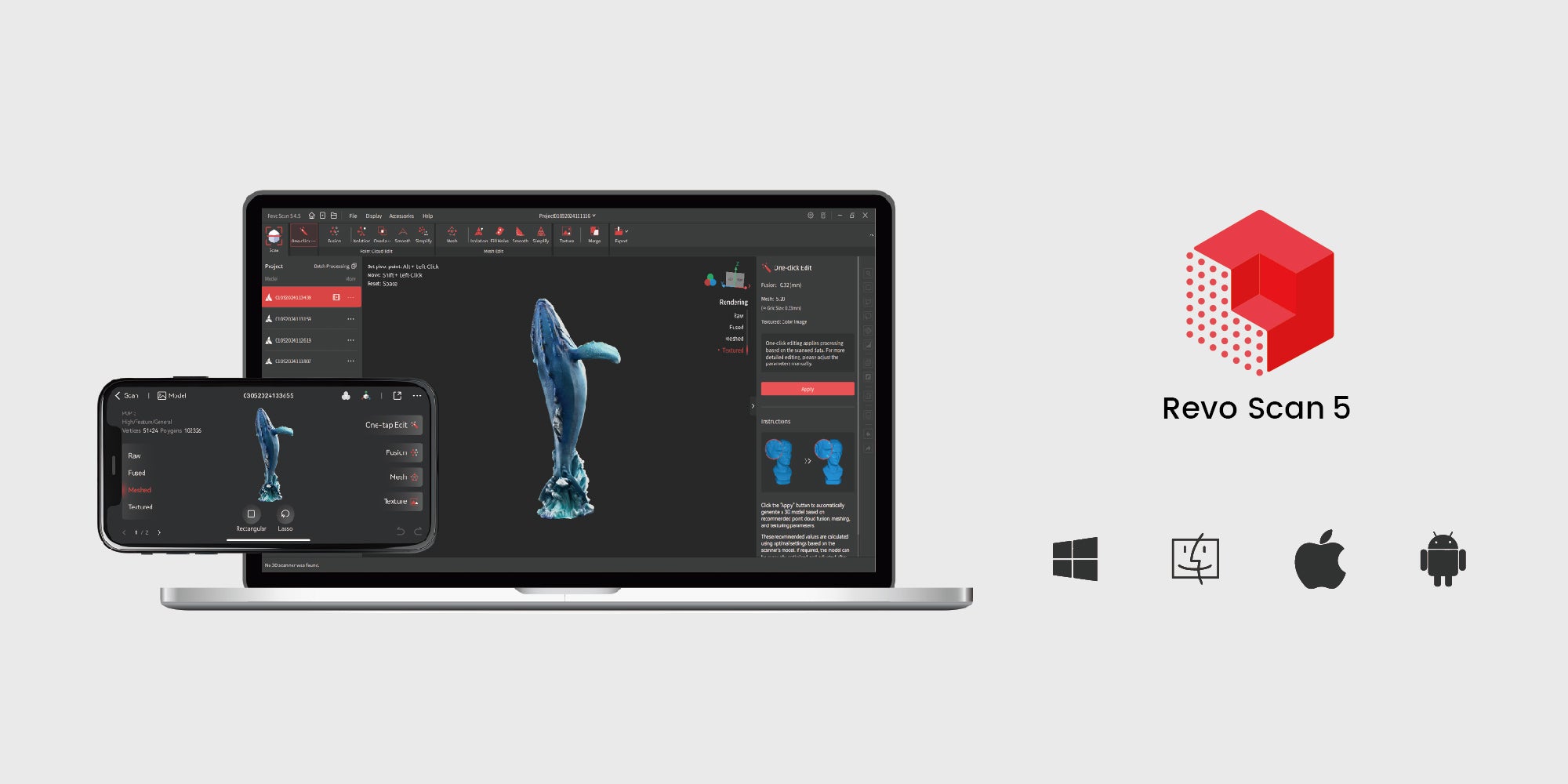In recent years, 3D scanning has emerged as a key component of Industry 4.0. The significant boost in productivity provided by 3D scanners, which capture accurate measurements and create detailed 3D models, has transformed how businesses operate and innovate. Let’s explore the top eight industries transformed by 3D scanning technology.
Manufacturing and Engineering
3D scanning streamlines manufacturing by enabling rapid prototyping, quality control, and reverse engineering. This allows for the quick creation of accurate models of parts and assemblies, reducing the time and cost of production while ensuring high accuracy and consistency. This has proven invaluable to companies like GE Aviation, which uses 3D scanning to inspect their 3D-printed LEAP jet engine components, ensuring that every part meets their quality standards.

Healthcare and Medicine
Accurately mapping every body part, from head to toe, using 3D scanners is helping healthcare professionals create better-fitting, customized prosthetics, orthotics, and dental implants. The Mayo Clinic uses 3D scanning to diagnose and create patient-specific surgical guides for complex procedures, enhancing surgical accuracy and outcomes.

Construction and Architecture
Whether planning renovations, monitoring construction progress, or creating as-built documentation, architects and construction professionals find 3D scanning invaluable for accurately capturing existing structures and terrains. For global construction firms like Skanska, its use leads to more efficient project management from conception to completion. They use 3D scanning to monitor construction sites and ensure that projects adhere to design specifications, reducing costly rework.
Automotive and Aerospace
3D scanning is also essential in designing and inspecting components in companies like Ford Motor Company and Airbus. Where 3D scanners are used for quality control on their production lines, ensuring that each vehicle component meets design specifications before assembly. Also, they can used for maintenance by using the captured data to help evaluate wear and tear on critical parts.

Entertainment and Media
From film production to video game design, 3D scanning is a key tool for creating realistic characters and environments. It enables the digitization of actors, props, and sets, enhancing visual effects and animation processes. Weta FX, the visual effects studio behind "The Lord of the Rings," uses 3D scanning to create detailed digital twins of actors and intricate set designs, bringing fantasy worlds to life.
Cultural Heritage and Archaeology
Often, those fascinated by all things ancient are early adopters of any new technology that will help drive research forward. 3D scanning has immediately stood out as such technology, enabling the creation of digital archives that capture detailed representations of historical objects and sites. This is particularly valuable for fragile or inaccessible items, ensuring they can be studied and appreciated for future generations. Museums like the Smithsonian have been digitizing their extensive collection of artifacts using 3D scanning, making them accessible to researchers and the public worldwide through virtual museums.

E-commerce
Online retailers have leveraged 3D scanning technology to create a more interactive shopping experience. This allows consumers to interact with 3D models of products to understand exactly how a product looks from all angles. In some cases, brands like IKEA use 3D models as an AR experience for customers to see how something will look and fit in their homes before buying.
Education and Research
In academia, 3D scanning is a valuable tool for research and education. It allows students and researchers to create accurate models of objects and phenomena, facilitating better understanding, information dissemination, and innovation. Top institutions like Harvard University and UC Berkeley incorporate 3D scanning and the use of 3D models into some of their curriculums, allowing students to scan and analyze complex structures or study ancient artifacts in full 3D detail.
As this technology continues to evolve, companies like Revopoint are working to make professional-grade devices, such as the MIRACO series and MetroX, more accessible and affordable for a wider audience.
Take a deeper dive into 3D scanning with these helpful articles



Hinterlasse einen Kommentar
Diese Website ist durch hCaptcha geschützt und es gelten die allgemeinen Geschäftsbedingungen und Datenschutzbestimmungen von hCaptcha.